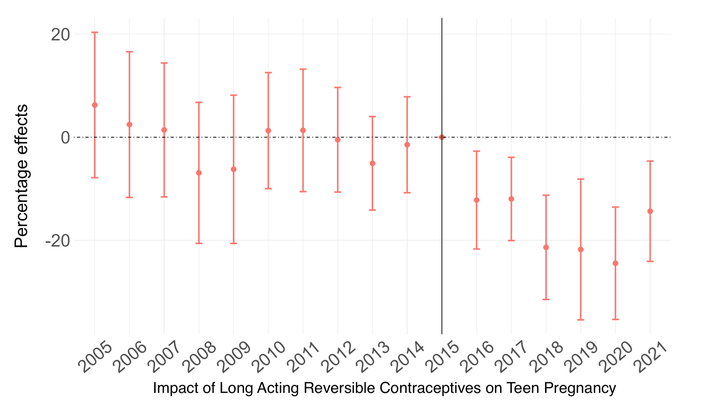The Role of Information and Contraceptive Use on Teen Pregnancy

Abstract
This paper investigates the importance of information campaigns in policies providing free access to contraceptives. We exploit a policy change in Costa Rica, where the government provided access to long-acting reversible contraceptives (LARCs) to study the effects of both access and information campaigns on the teen birth rate. Utilizing a differences-in-differences methodology, we show a reduction over 21% in the teen birth rate during the first three years of the policy. To disentangle the role of information campaigns from the contraceptive provision, we leverage the number of years each cohort spent in school as the campaigns were primarily delivered within schools. We show that access to LARCs reduces the teen birth rate by 18%, whereas exposure to information campaigns amplifies the impact of access by roughly 4% more per year of exposure. The initial effect of access to LARCs on the teen birth rate nearly doubles after four years of exposure. We conclude that information campaigns are essential in conjunction with access to contraceptives to effectively address adolescent pregnancy.